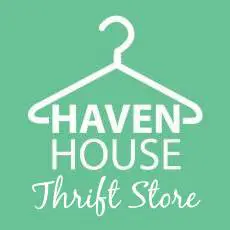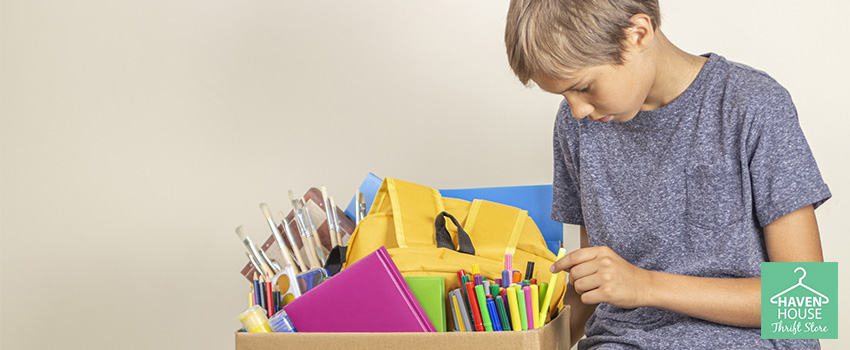Have you noticed the price of brand new quality clothing lately? Nothing seems to go below $60 dollars. For tightwads, this is way too expensive, especially when there are other options like secondhand shopping in thrift stores.
Many people have happily embraced thrift shopping, filling their wardrobes with cheap good quality clothes that are only a fraction of the cost of retail items. They are also loving the idea of wearing or using vintage items, which are exceptionally unique and classy.
But of course, not all items are created equal. To get the best pieces from a thrift shop, you have to know what features to focus on and which ones to avoid. See some tips below:
Things to Check
Finding secondhand quality clothing does not have to be a guessing game. There are indicators:
1. Metal Zippers
Plastic zippers are generally less durable, easier to pull off the track, and harder to zip. Save yourself from a lot of frustration by choosing clothes with metal zippers.
When washing and drying though, the teeth of metal zippers can easily damage the fabric of your clothing. Be sure to zip it up before laundering to make them last longer.
2. Natural Fibers
Synthetic fabrics like spandex, polyester, nylon, and acrylic are made from plastics. They are more prone to piling and are easily damaged by too much heat during drying and ironing.
If you want clothing that holds up naturally after washing, get natural materials like linen, wool, or cotton.
3. Patterns That Align
When buying quality clothing, details matter. Check how well the plaids, stripes, and other patterns align at the seams.
Details matter. Check the seams of the clothes and see how well the patterns align at the seams. Aside from looking unsightly, poorly unmatched patterns are indicators of hasty, poor-quality production.
4. Durable Seams
Stitches join two or more pieces of fabric in a seam. Most wardrobe malfunctions are due to faulty seams. To make sure this does not happen to you, you must learn how to spot quality seams. They should be laid flat and free from raveling, puckers, and other irregularities.
The best type of seams are busted seams and flat-felled seams. With busted seams, the fabrics are stitched together and then pressed open. An overlock stitch finishes every raw edge. The latter is common in work attire and jeans. Flat-felled seams are thick and identifiable by two lines of stitches.
5. Quality Stitching
Without good stitching, it’s impossible to produce quality products. Always look for stitches that are straight, uniform, and reinforced at all stress points, including the shoulder area, armholes, pockets, waistband and belt loops, and crotch and seat of pants.
Give the item you are eyeing a little tug test! Pull lightly on the seam. Quality stitches should hold tight and keep the fabric in place.
Things to Avoid
You surely don’t want obviously worn-out clothes, but that’s just the first on the list. Clothing with any of these signs must be left on the thrift store rack:
1. Snaps and Zippers That Don’t Work
When shopping for secondhand clothing at thrift stores, you need to test everything! Do it twice or more if possible! Examine the items carefully. Quality clothing should have snaps that are working properly.
2. Stains and Discoloration
Unless you are going for the popular early 1990’s distressed look or you want a white-washed pair of jeans, you should not buy stained or discolored clothing.
Stains normally occur in the armpits and collars of shirts, tips of ties, fronts of jackets, and anywhere on pants. Although it is possible to remove stains with common household products, it is best not to gamble.
Fading is also common in clothes that have been exposed to direct sunlight too long. A piece of set clothing may also fade more than the others. For example, most men wear their trousers more often than the blazer. Due to frequent washing and drying, they may discolor and no longer match the suit.
3. Pilling
One reason why that piece of clothing is in a thrift shop is probably because those loathsome lint balls start to appear. Do not buy pilled clothing! While you may remove them temporarily using lint brushes or razors, they will reappear the next time you wash it.
4. Hanger Bumps
Shoulder horns are common on knit shirts and sweaters that have been hung for too long. Over time, fabric fibers are stretched, creating bumps. While there are tips on how to get rid of them, most weren’t really effective. Save yourself some time and trouble by avoiding clothes with hanger bumps.
5. Offensive Odors
When thrift shopping, you have to trust your senses! Even if a piece of clothing looks very appealing to the naked eye, it is still best to do a quick sniff test!
It is not just the smell of cigarettes or mold that you should avoid. Heavy scents are also obnoxious and difficult to get out of fabrics.
Would you want to try shopping for cheap good quality clothes from a thrift shop? Check Haven House branches in Panama, Santa Rosa, and Destin FL. We also have one in Lebanon, TN.




